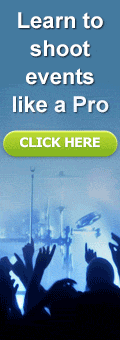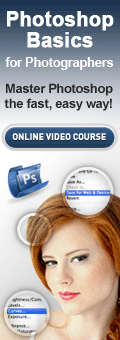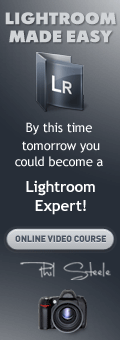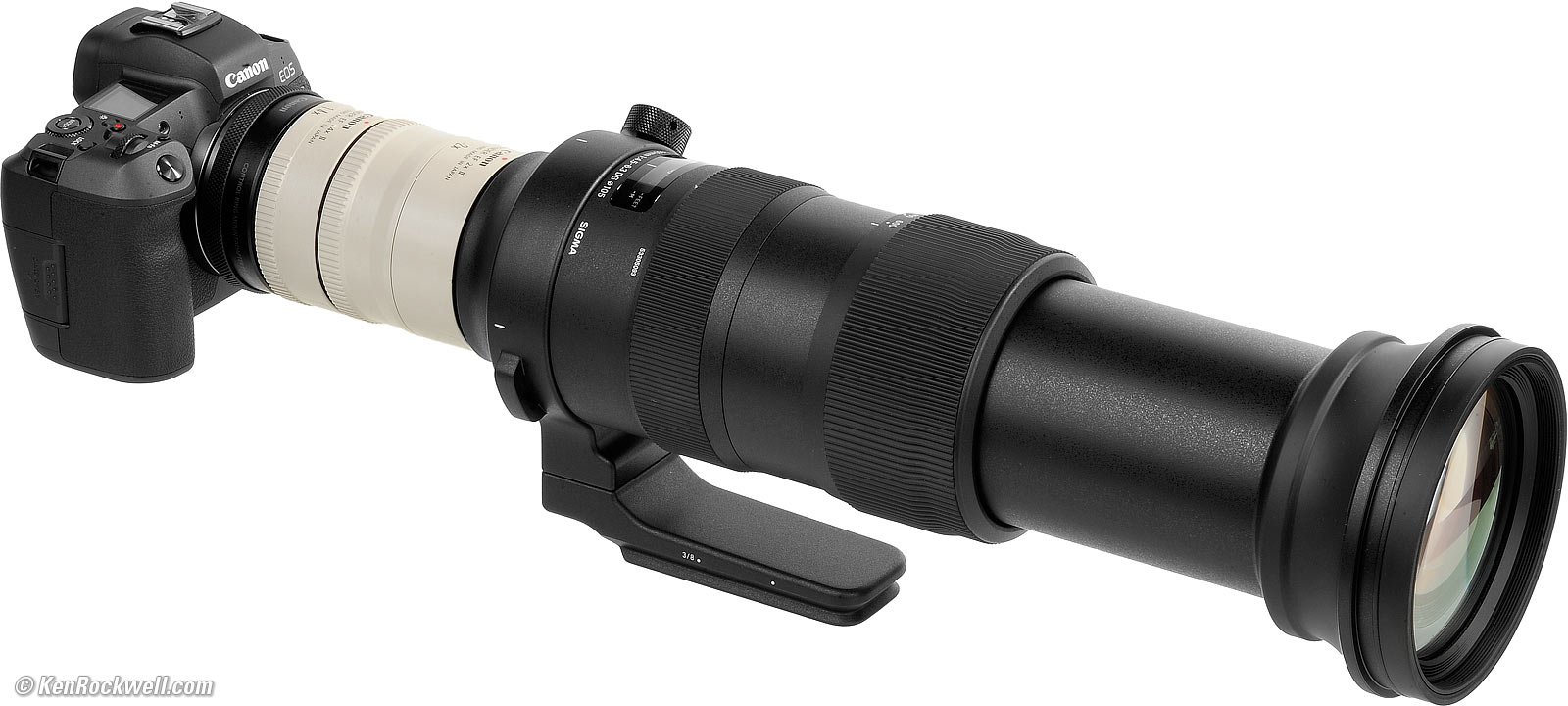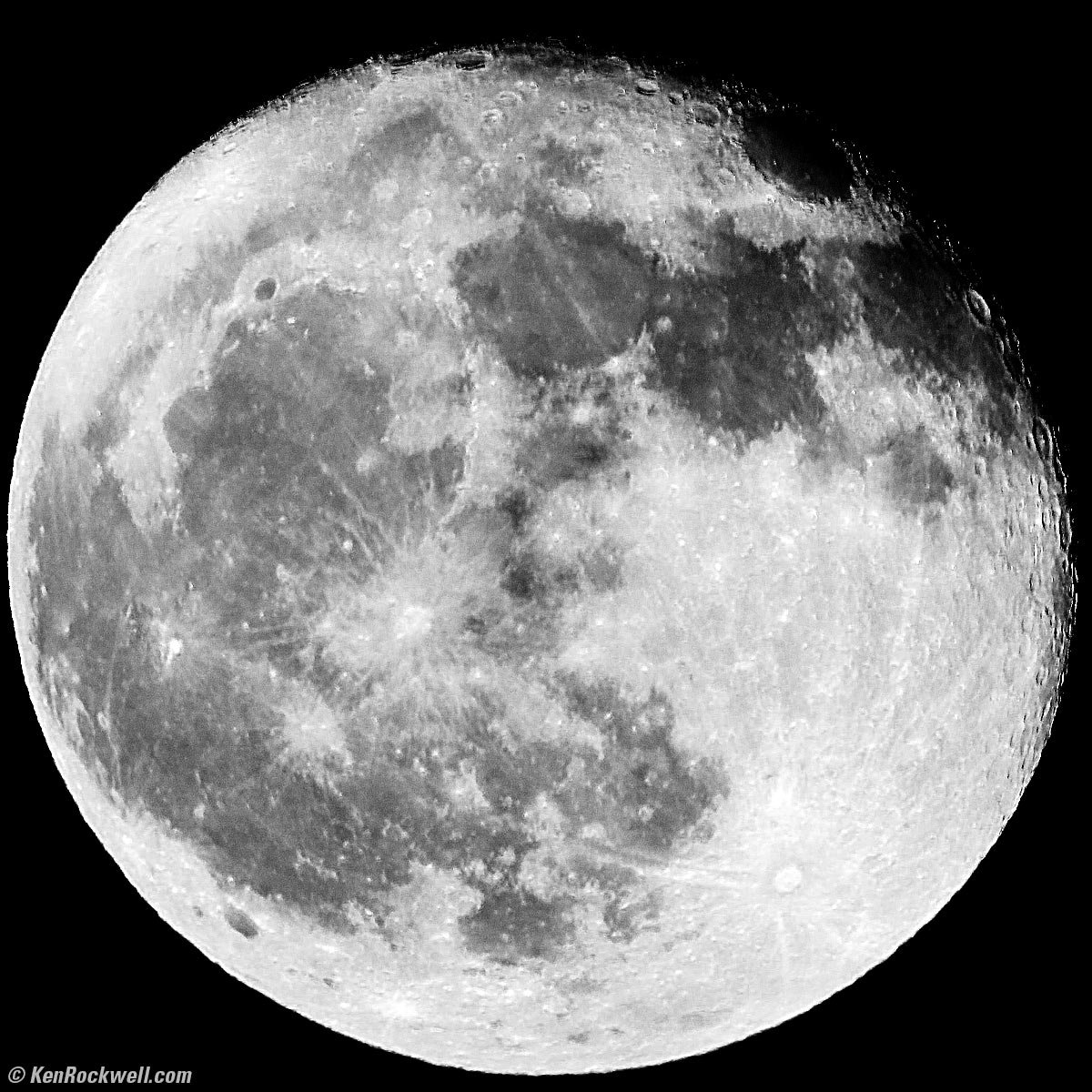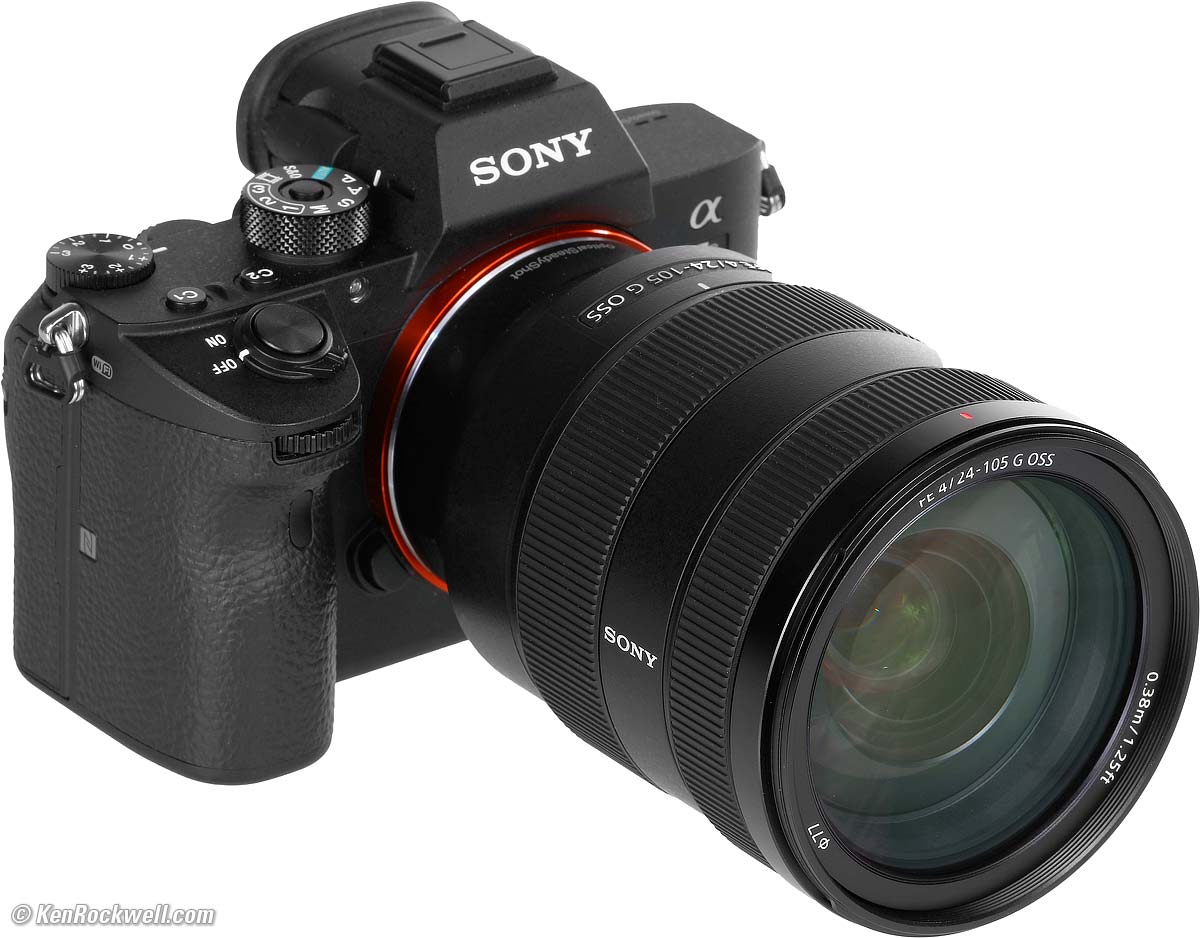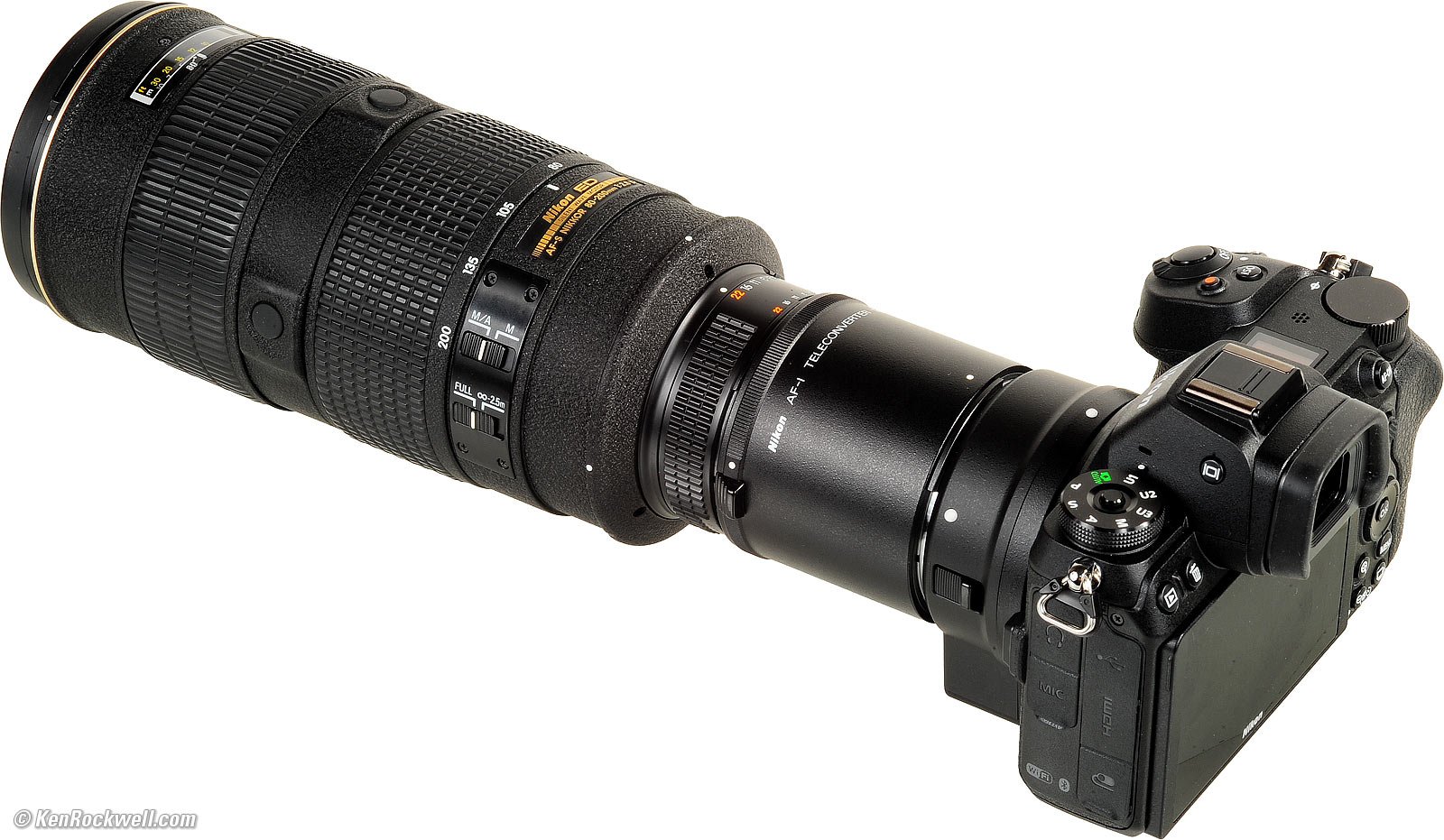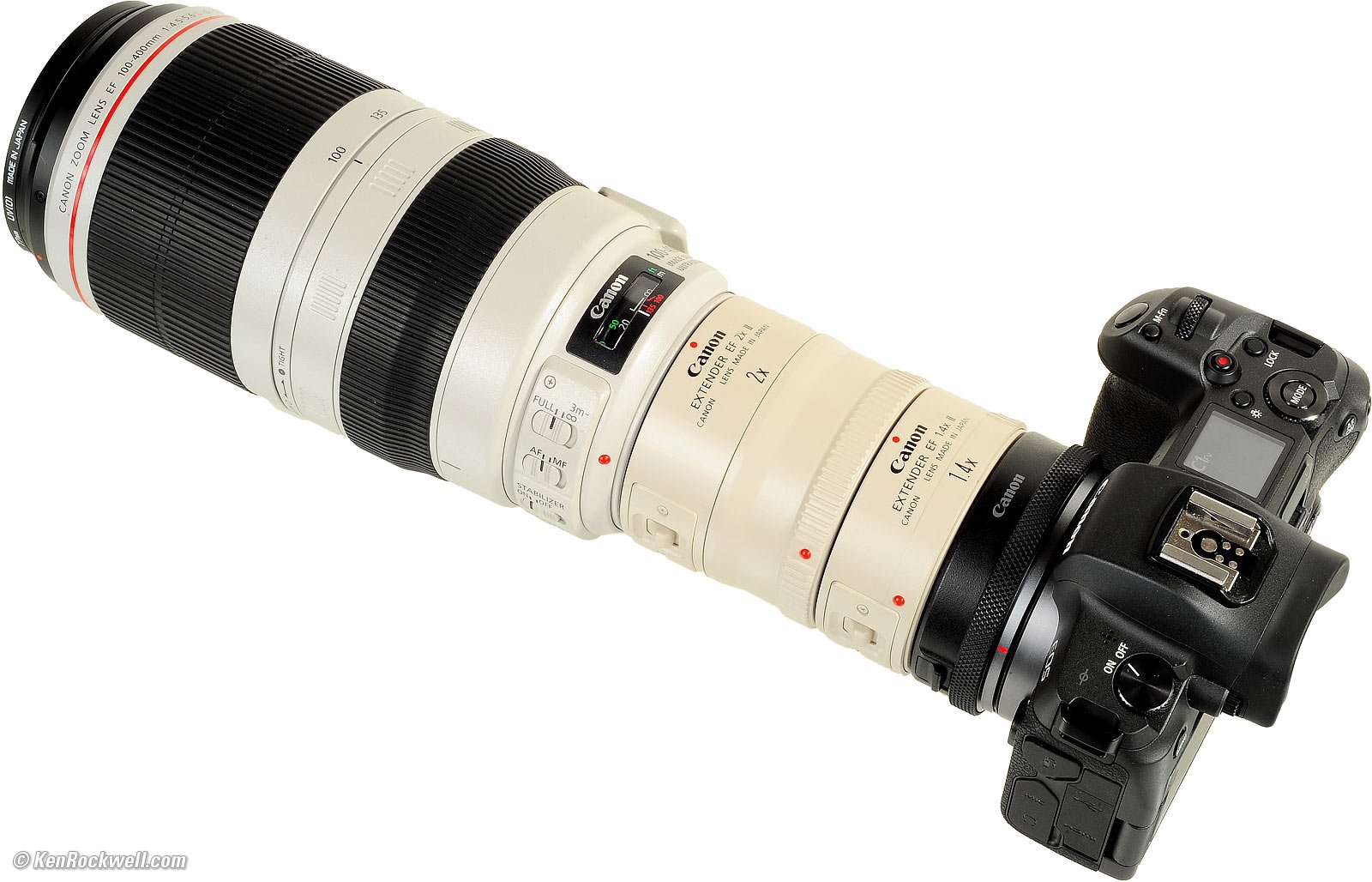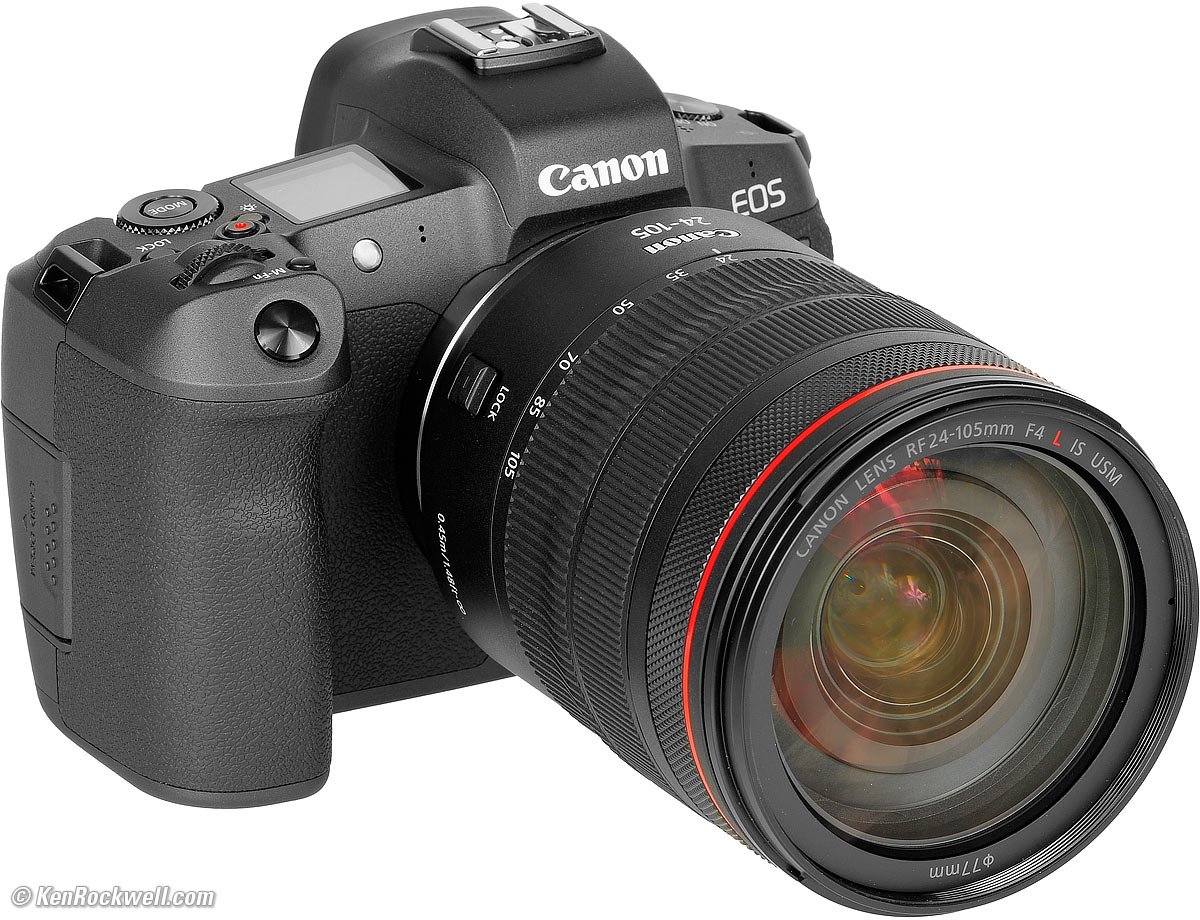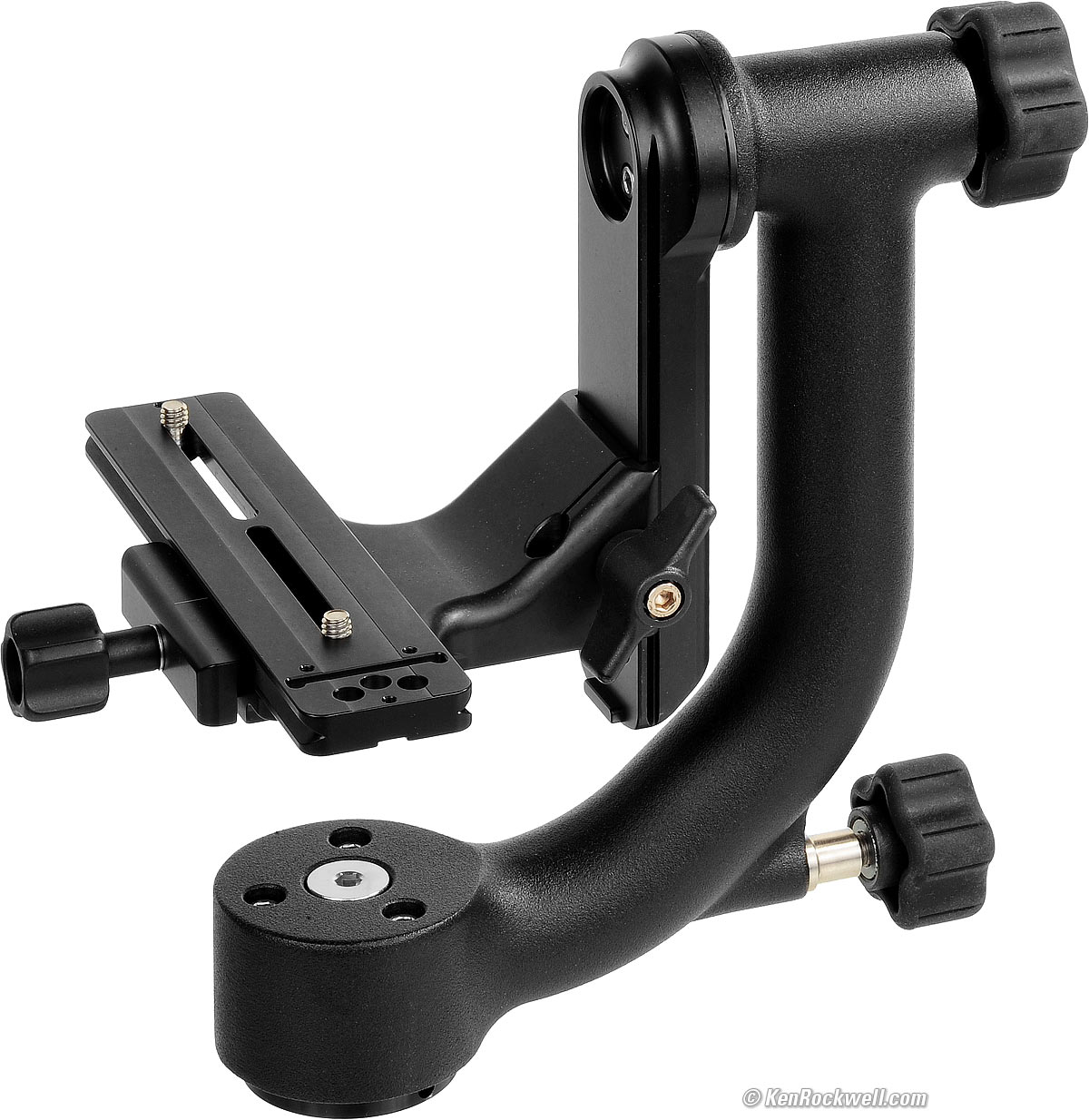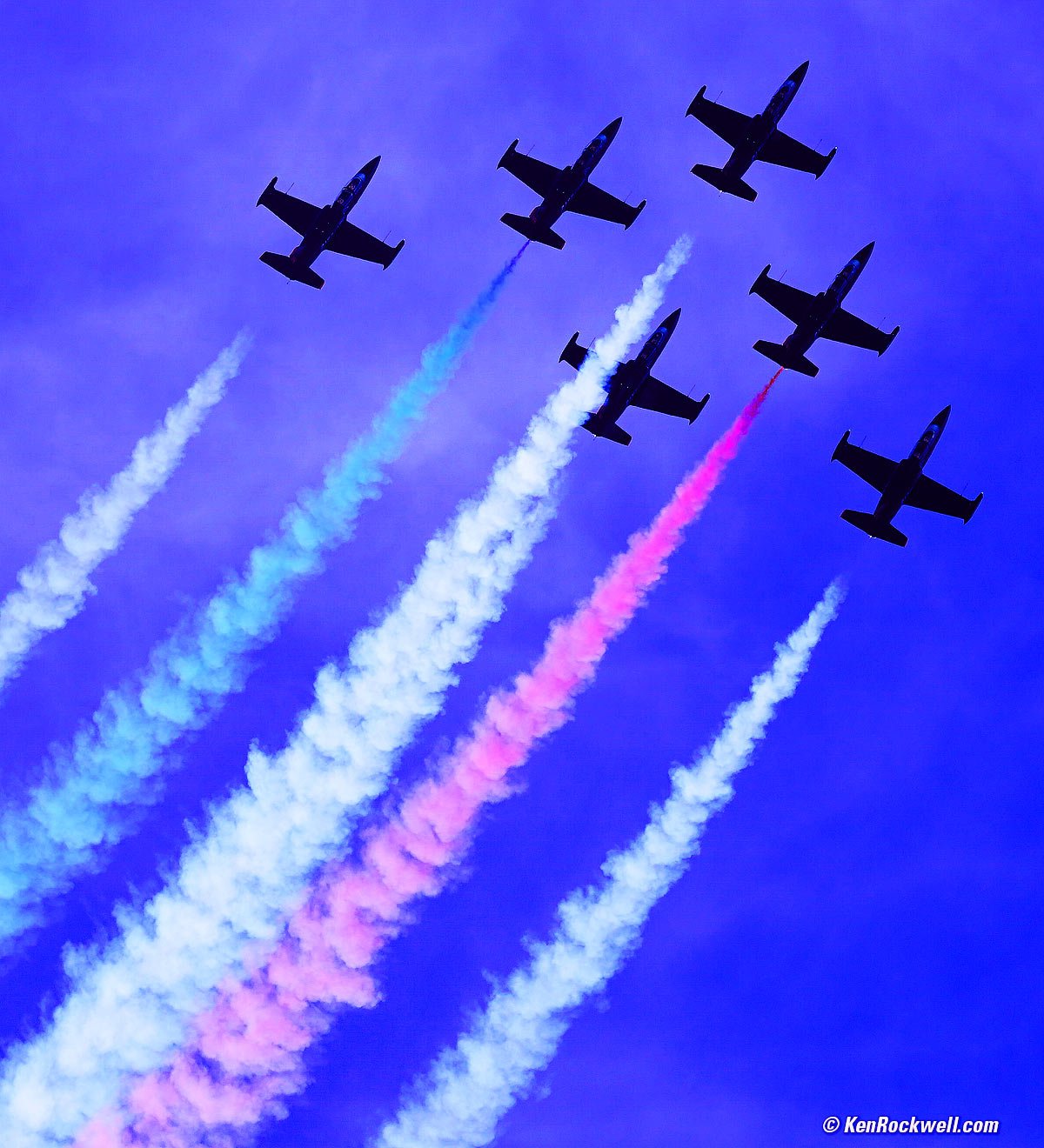October 2018's News
< < back to Today's News
Mirrorless vs DSLR Nikon vs Canon vs Sony Full-Frame Mirrorless
Canon: EOS R 1DX II 5DS/R 5D Mk IV 6D II 7D II 80D 77D SL2 T6 Flash Lenses
Nikon: Z7 Z6 D5 D850 D810 D750 D610 D500 D7500 D5600 D3500 D3400 Lenses
Sony: A9 A7R III A7 III A7RII A7SII A7II A7 A6500 A6300 A6000 RX10 IV RX100/6 RX100V Lenses
LEICA: M10D M10P M10 M240 M-E M9P M9T M9 M7 M6/TTL CLE M3 IIIf IIIa Lenses
All Reviews: Apple Audio Fuji Zeiss Hasselblad Contax Olympus Pentax
Recommended Cameras Best Cameras Gifts How to Take Better Pictures random
Links: Adorama Amazon B&H Crutchfield eBay Tutorial Videos Infrared
Adorama's Daily Deals Amazon's Deals-of-the-Day B&H Deal of the Day Crutchfield's Sales

|
31 October 2018, Halloween
Too Crazy!
Adapter to use LEICA M lenses on Sony - and ADDS AUTOFOCUS!!!
Nikon can't even put an AF motor in its FTZ to let our AF and AF-D lenses autofocus on our Z7 & Z6, while the Chinese have had the wherewithal to put a motor in a third-party adapter to autofocus classic manual-focus LEICA M lenses on Sony.
Bravo!
30 October 2018, Tuesday
In Stock: Canon RF 50mm f/1.2L (for EOS R) at B&H.
The world's finest 50mm lens - way better than the fabled Nikon Noct-NIKKOR (much sharper and adds ultra-accurate autofocus) and the LEICA NOCTILUX f/1 (way sharper and adds ultra-accurate autofocus).
26 October 2018, Friday
Can You Believe This Actually Works?
Canon EOS R, EF Control Ring Adapter, Extender EF 1.4x II, Extender EF 2x II and Sigma 60-600mm. bigger.
I put all this together last night since my new Sigma 60-600mm had just arrived, and it actually works, with autofocus! Here's what you get in the APS-C crop mode on the full-frame EOS R (I cropped a full-height square from the APS-C rectangle):
The Moon, 0246 UTC 26 October 2018. Canon EOS R, 1.6x APS-C crop, EF Control Ring Adapter, Extender EF 1.4x II, Extender EF 2x II and Sigma 60-600mm set to 600mm, giving an effective 1,680mm focal length, 1/30 at ISO 1,600 at full aperture. bigger.
The moon barely fit the APS-C frame as you can see here, and yes, the EOS R easily autofocused at the f/18.5 that results when using both converters at the lens' 600mm setting. AF isn't that great with this extreme setup with an off-brand lens at 1,680mm total for most shooting, but for something simple like the moon, it works great.
Yes, I use the older -II extenders; they're all the same inside even if Canon changes the paint color on the outside.
I could have used a lower ISO if I had a clock drive to track the moon; at this astronomical magnification you can see the moon running across your frame just as you do in a telescope without a clock drive to track the heavens.
25 October 2018, Thursday
NEW: I've added sections on Long Exposures and on Advance Modes in my Canon EOS R User's Guide.
It's easy to program the EOS R to make precisely timed exposures of any length up to 100 hours, without needing any remote release cord. Cool!
NEW: I've added quite a few new items to my master Nikon vs Canon vs Sony Full-Frame Mirrorless Comparison.
This is the sort of unbiased industry report for which big companies pay thousands of dollars under NDA to read, and it's all here for you to read (but not copy or print) for free. Back when I had a real job I used to take just as much time to research these reports, and that's what they sold for to our clients.
24 October 2018, Wednesday
A New Instrument of the Immortals
Ein neues Instrument der Unsterblichen
The new LEICA M10-D is a digital camera which dispenses with the distracting rear LCD so artists can focus on the only thing that matters: what's in our picture.
It helps make good artists better because we can spend our attention on the only thing that matters: what's in our picture, and not be distracted by the trivialities about which posers will talk for hours.
No menus, no BS, no problem! It even has real leather on the outside, even better than the Vulcanite of LEICA's best camera of all time, the indomitable LEICA M3.
The M10D has an internal motor drive; what looks like a film advance lever is a dummy and only works as a fold-out thumb rest.
The LEICA M10-D is a camera for shooters who know what they're doing. Are you good enough? B&H also has it.
23 October 2018, Tuesday
Mac OS RAW Support
I'm sure you all know this, but you can discover your Mac's native support for RAW files by clicking the Apple at the top left of your screen, then SYSTEM REPORT, then SOFTWARE and then Raw Support.
Do this and your Mac will list every camera whose raw files your operating system can read, natively.
Cool, eh?
I'm Back!
I just got back from Yosemite, where I shot my Canon EOS-R, Nikon Z7 and iPhone XS MAX each day. I shared iPhone images live on Facebook and Instagram as I shot them, and it will take me a little while to publish the images from the big cameras.
I know you want to know, and the more I've shot both the Canon and Nikon, the more I prefer the Canon. Everyone loves the iPhone, and the Canon has no rough edges (big weaknesses) either. The more I shoot my Z7 the more I find it can't do. My Z7 can't show a live RGB (color) histogram in the finder as I shoot and doesn't work with all my favorite lenses, both of which the EOS R does easily.
The Z7, like Sony, has a design flaw that prevents the shutter from closing when the power is off. Therefore my Sonys and Nikon Z7 are always open to dust pickup, while my EOS R closes its shutter as it should unless it's turned on. Of course I turn off my EOS R when changing lenses, so it's not picking up visible dust.
The Z7 does make spectacular images, just like a D850 - but the D850, like all FX DSLRs, works properly with all my favorite AF and AI-S lenses that the FTZ leaves behind. The FTZ is expertly crafted by Nikon's marketing department to make it seem as if it works with manual focus and traditional screw-focus AF lenses, but they know after months of not having autofocus with screw-AF lenses or matrix metering with manual lenses that you'll wind up buying new AFS and AFP lenses to replace your older lenses.
Of course if all your lenses are AFS, AFI and AFP, as most newer ones are, then you're golden with the Z7. Not all of you have a dusty, fortified catacomb filled with Nikon lenses made since the 1940s as I do! It will be awesome when I can adapt my 1946 NIKKOR-H•C 5cm f/2 to my Z7. The weird reality is the more of a lifelong Nikon shooter you are, the more likely you are to be dissatisfied with the FTZ's lack of integral AF motor and lack of aperture-ring feeler that makes it not particularly compatible with many of our lenses that still work great on FX DSLRs.
For normal people who've only been shooting five or ten years, the Z7 probably works great with all your lenses, and the Z7 & 24-70 combo's stabilization lets me get sharp shots at 24mm at 1/2 second hand-held, while my EOS R and 24-105 combo only do the same down to 1/8 of a second hand-held. On the other hand, I greatly prefer the 50% extra range I always use with my Canon 24-105 versus my "stubby" Nikon 24-70.
16 October 2018, Tuesday
IN STOCK: Nikon D850 in-stock at Adorama.
They won't last long, but as I write this Adorama actually has a few D850 in-stock for immediate shipment probably for the first time since they were announced last year.
14 October 2018, Sunday
NEW: Nikon Z7 High ISO Performance.
NEW: Canon EOS R High ISO Performance.
12 October 2018, Friday
Sony A7R III Sale
Sony A7R III and 24-105mm f/4 G.
The Sony A7R III has been selling at $3,200 since 2017, and just went down to $2,998 at Adorama, at Amazon, at B&H or at Crutchfield.
Nikon and Canon must be giving them fits; the Nikon Z7 is higher resolution (45 vs 42MP) and feels much better in hand. More at Nikon vs Canon vs Sony Full-Frame Mirrorless, to which I add more every day.
Ektachrome Anyone?
Kodak actually now makes some 35mm Ektachrome E100G you can order at Adorama and at B&H.
You guys can go to it; I never liked Ektachrome and always have shot Velvia or Velvia 50. This is art, and to each their own. I'm still working off a vast freezer full of original Velvia and Velvia 50 in 35mm 120, 220, 4x5 and ReadyLoad that should last me the rest of my career. To be honest I don't shoot it in 35mm anymore and have hundreds of rolls of 35mm I've had frozen at 0ºF since the day I bought it, and might start thinning it out one day - but seeing how prices are now $17 for a roll of 35mm Velvia 50, my stash is doing nothing but appreciating.
I let NCPS do all my processing and scanning, and they do everything by mail if you don't want to walk it in.
How about those Kodak Bitcoins?
While we have Kodak on the table, I feel so smart and prescient as usual that when I told a KCBS live radio interview on 09 January 2018 that Kodak's January press announcement of bitcoin mining hardware and a magical new platform for photographers to sell pictures was all krock.
First off, bitcoins are fake and no one even knows what they are other than a vehicle for smarter people to take money from more impressionable people, and that photographers already had numerous platforms through which to sell photos. Therefore Kodak's announcement, which was nothing more than a press release stating future intention with zero actual product available, was pure fluff.
I credited whoever penned that announcement for quadrupling Kodak's stock value that day, skyrocketing from $3 to $12 a share, and as I predicted, Kodak's stock today is worth even less: $2.45 as I write this. Let's face it, Kodak hasn't been relevant to mainstream photography for a decade. If you bought it that day at $12, you got suckered, but if you sold the day it hit the news and heard my critical analysis, you WON!
Also as I wrote, Bitcoins had skyrocketed to nearly $20,000 each in January, and have plummeted back to $6,200 today. Anyone who got into bitcoins back during the hullabaloo in January lost their shirts to the smarter people who had bought earlier. Here's a tip from a seasoned investor: when it's in the news and everyone is talking about it, that's the time to SELL. When news tells you to buy, they're pumping up the value and it's time to take advantage of that boost by selling.
NEW: Think Tank Emergency Rain Cover.
NEW: Think Tank Hydrophobia 24-70 v3 Rain Cover.
I just got a new Think Tank Emergency Rain Cover. It's a brilliant little thing that hides in the back of my bag that unfolds to be a serious heavy-duty nylon rain cover.
It's made of sealed nylon, and has a clever clear back with an integral hot-shoe gizmo that you slide into the camera's shoe and keeps the clear window perfectly aligned so you can stick your hands in the bottom and always see everything. The front has velcro to snug around your lens.
The key is that this little camera cover is smaller than the rain covers that come with my bags. I usually leave my bag covers at home since I'm not expecting rain, while these emergency camera covers are small enough to take with me - just in case. While they're called "emergency," they look tough enough to last me a life time since I don't expect to shoot in the rain much. They are well made; they aren't disposable.
When you use thes links as friends of Ken Rockwell you get some free goodies as well.
I have other Think Tank reviews, as well as a detailed review of an older Hydrophobia 70-200.
Bravo, Think Tank!
11 October 2018, Thursday
China Answers!
China already has numerous adapters for any kind of lens to Nikon Z available.
See:
Olympus OM to Nikon Z Adapters
Minolta MD to Nikon Z Adapters
Chinese Canon EOS R adapters ought to be out in another couple of weeks, it's just going to be harder to find them because "EOS R" returns so many other results.
10 October 2018, Wednesday
Black Hits Back!!!!
Works GREAT with Teleconverters!
Nikon 80-200mm f/2.8 AF-S, TC-20E, FTZ & Z7. scarier.
Teleconverters work GREAT on the Z7!
This crazy Nikon 80-200mm f/2.8 AF-S + TC-20E + FTZ + Z7 conglomeration works great, better than it ever could on any DSLR. On the Z7, this gives me super-fast autofocus all over the entire frame, no viewfinder darkening, and great pictures. On any DSLR with a 2x TC the AF gets pretty slow, the finder gets dark from it only being f/5.6, and no DSLR ever could autofocus over the entire frame fast with any lens.
Of course this is my 80-200mm f/2.8 AF-S, which is the newer model of the 80-200/2.8 AF-D. Nikon discontinued the superior AF-S model years ago but still sells the older AF-D version today - which won't autofocus at all on the FTZ. Only 80% of the autofocus lenses Nikon sells new today (70 out of 88) actually autofocus on the FTZ, and a much smaller percentage of all Nikon lenses actually in our hands today. So sad.
Just like the Canon EOS R with EF Lens Adapters, mirrorless rigs work great, better than DSLRs ever could.
Nikon has the Best Performance with Manual-Focus Lenses
While Sony and Canon often need a few stops of exposure compensation when using random manual focus lenses on random Chinese adapters, Nikon AI lenses on the FTZ usually work pretty well on the Z7:
Exposure Accuracy with Adapted Manual-Focus Lenses
Very Good While there is no matrix metering with AI lenses on the FTZ (so shots of white objects like snow or sand may require manual compensation), otherwise exposure is reasonably accurate. |
Poor Often needs several stops of exposure compensation with manual lenses on random Nikon F or Canon FD adapters on Canon's EF adapters. |
Poor Often needs several stops of exposure compensation with manual lenses on random Chinese adapters. |
More FTZ Compatibility
Having had my own in my hands, here's what happens:
With AF‑S (1984 - today), AF‑I (1992 - 1998) and AF‑P Lenses (2017 - today)
Everything works great with these newest lenses.
With AF‑S lenses like the new 20/1.8G, 16-35VR, 28-300mm VR and old 80-200/2.8 AF-S, as well as old AF‑I like my 1994 400/2.8 and the newest AF‑P lenses, everything is fully compatible with excellent full-frame autofocus, distortion corrections and full EXIF and exposure control.
With DX Lenses (2003-today)
The Z cameras automatically apply a DX crop and everything looks great as you shoot; unlike with a DSLR, the DX image always fills the finder.
With Teleconverters
Far better than DSLRs, using the TC-20E teleconverter (and newer -II and -III versions of the TC-E series), you still get full-frame autofocus and it's just as fast! With DSLRs AF got slow and buggy and only worked with the center sensor, while with mirrorless you don't lose anything.
With AF‑D Lenses (1992 - today)
Nikon got cheap and didn't include an autofocus motor in the FTZ, so there is no autofocus with AF‑D (screw-type AF) lenses like today's 14/2.8D, 16/2.8D Fisheye, 35/2D, 50/1.4D, 80-200/2.8D, 105/2DC, 135/2DC and many more.
Otherwise all else works well, with full EXIF communication, distortion and exposure control, and electronic manual focus aids.
With AF Lenses (1986 - 1992)
Nikon got cheap and didn't include an autofocus motor in the FTZ, so there is no autofocus with the oldest screw-type AF lenses from the 1980s like the 50mm f/1.8 AF. You get full EXIF communication and exposure control, but no electronic manual focus aids or distortion control.
With AI‑P Lenses (1988 - today)
Manual-focus AI‑P lenses like the 45mm f/2.8 AI-P work the same as old AF lenses from the 1980s: they are manual focus with full EXIF communication and exposure control, but no electronic manual focus aids or distortion control.
With Manual Focus AI converted, AI, AI‑s & Series E Lenses (1977 - today)
Nikon got cheap and didn't include an aperture-ring feeler in the FTZ as in every FX DSLR, so it can't read the actual set aperture, so we no longer get matrix metering and have to add exposure compensation with bright or dark subjects like backlight, snow or sand.
Because it can't read the set aperture EXIF data only reads the maximum aperture, not the actual aperture you used.
With fast manual-focus lenses like the NOCT 58mm f/1.2 AI-s on the FTZ, manual focus is easy because the finder accurately shows the very narrow depth of field at f/1.2, which DSLRs can't do with their modern laser-cut bright screens that replaced true ground glass back in the 1980s.
Focus peaking works great (MENU > CSM d10 Peaking highlights > ON).
There are no electronic focus aids: the AF areas don't change color and there is no electronic rangefinder.
You can magnify the image for precise focus.
Weird is that you can set MENU > Camera > Auto distortion control > ON, but it doesn't do anything with manual focus lenses.
An FX DSLR works better with manual focus lenses, adding correct EXIF data and faster electronic focus aids absent with this adapter. Then again, use this adapter on mirrorless and you can shoot silently.
With Manual Focus F-mount (non-AI) Lenses (1959-1976)
While there may be some mechanical interference with some lenses that prevent them from mounting on the adapter, if you safely can attach an ancient pre-AI lens, it works exactly the same as the manual focus AI converted, AI, AI‑s & Series E Lenses above.
09 October 2018, Tuesday
Preliminary Scores are in!
Just for grins I added stage and total point scores in my fast-growing Nikon vs Canon vs Sony Full-Frame Mirrorless Comparison, and Canon won:
70 |
85 |
71 |
Limited native lens range, adapter incompatibility with old-style AF lenses and finder auto brightness control need improvement, and needs a second card slot. If all your lenses are AFS or newer like the 28-300, then the Nikon scores 73 — but most of us have older design AF lenses still sold new today like a 135/2DC, 14/2.8D or 80-200/2.8ED we'd like to use but just became manual focus on this camera. |
Turn-on and wake ought to be faster, lens caps ought to be redesigned to fit any way, needs a second card slot and finder should have auto brightness control, but these are the worst things I can say about the EOS R. Superior system "made-in" and customer support quality, superior adapted lens performance and relative lack of major flaws lets the EOS R win on points. |
Awful menus, painful ergonomics and body industrial design that were tolerable before Nikon and Canon entered the picture need a complete overhaul to stay competitive. Color rendition needs to be stepped-up a notch to match or exceed Nikon and Canon for use by experienced virtuosi. Even with the best overall finder, high-speed AF and frame rate technology, Sony needs to step up its game to stay in the game it invented. |
Of course I'm learning more every day now that my Z7 is in my hot little hands, and these numbers will change as time goes on.
I'm especially curious as to how the Nikon will fare with dust. All my Sonys get dust on their sensors, probably because they have a design flaw in which they don't close their shutters when turned off to change lenses. Nikon has this same flaw (they get their sensors from Sony), so we'll see. I've had my EOS R for over a month, and no dust yet.
The Two-Week Rule
Something I've forgotten about since no one's made any really new cameras for a lot of years (new Nikons keep changing model numbers and add a feature or two, but are still mostly the same as the cameras as they were in 2007 as far as how you set and use them), it just dawned on me with my Z7 just how much fun the first two weeks are with any genuinely new camera because it take me, a very experienced guy who shoots all day, every day, about two weeks when I get a new camera to learn its quirks well enough to get the exact results I want.
For most of, go easy on yourself and your new Nikon, Canon or Sony mirrorless when you first get it. Calm down, read the manual for the first time in years, and figure it out and practice, practice, practice until you get it right.
I've got all of these cameras and they all take great pictures, but each require different tricks to get the best results. No camera other than an iPhone is as simple as point and shoot; all the rest - and especially the new breed of mirrorless - require talent and practice to get the results we're all good at with our old cameras.
Don't go sending anything back if it doesn't just magically do what you expect; they all require time and experience to master, just as DSLRs did. We're all just too used to our DSLRs; I'm enjoying it again when I have to pick up a manual and experiment with my Z7 as I discover things like its exposures seem to need negative exposure compensation with wild colors with saturation cranked in VIVID; I'm wondering if Nikon goofed and is measuring exposure before the picture controls are applied? Only time will tell. I still can't find the color histogram for viewfinder shooting on the Z7, which the EOS R certainly has. A monochrome histogram is pretty useless for shooting color, and I honestly don't know if Nikon forgot that or I just haven't found if yet. I love these times, it's like 1999 all over again.
Can you believe this actually works GREAT?
Canon 100‑400L IS II, 1.4x and 2x converters, EF Lens Adapter and EOS R. scarier.
Holy cow! The Canon EOS R works fantastically with teleconverters and the EF Lens Adapters, with fast, full-frame autofocus with my 100‑400L IS II and even when used with both my 1.4x and 2x converters at the same time! That's a 280‑1,120mm f/12.6‑16 equivalent, easily hand-holdable!
This is because the AF sensors are on the image sensor, not buried deep inside a DSLR, so they see what the sensor sees and just work. With a DSLR, only the center AF sensor works at all with the 2x converter, and there is no AF on a DSLR when using both converters at the same time with the 100-400.
The one gotcha has always been that while the EOS R easily records the lens and teleconverter used, and reports the true f/stop and effective focal lengths with teleconverters, when you use the 1.4x and 2x converters at the same time it only calculates the effects of the 2x converter - but the pictures still look great and AF is still fast and sure.
Using the EOS R with teleconverters completely changes the rulebook; they work great with no slowing of AF performance from what I can see; I get better AF performance on the EOS R with converters than I ever do on DSLRs without TCs because DSLRs can never focus out to the edges!
Nikon Z7 Distortion Correction with Adapted Lenses
While my Canon EOS R expertly corrects distortion in all my old EF lenses introduced since about 1990, and even shows me these corrections live in the viewfinder as I'm composing, my Nikon Z7 is inferior at this.
My Z7 does not show the effects of distortion correction as you're Live Viewing as the EOS R does, and worse, the Z7 often only partially corrects the distortion of lenses on the FTZ adapter.
The Z7 wakes up faster than the EOS-R, but the Z7's OLED display is mostly invisible in direct sunlight. The EOS R's display is perfectly legible in daylight. Loads more at Nikon vs Canon vs Sony Full-Frame Mirrorless which I've been updating continuously.
05 October 2018, Friday
Canon EOS R and RF 24-105mm f/4L IS.
NEW: Canon EOS R Review.
NEW: Canon EOS R User's Guide.
I've been working on these for the past month. My Canon EOS R Review has new sections on High ISOs and Mechanical Quality and more, and my Canon EOS R User's Guide is all new.
03 October 2018, Wednesday
Wimberley WH-200 Gimbaled Tripod Head II.
NEW: Wimberley Gimbal Tripod Head Review.
The original and best gimbaled tripod head, another great example of American innovation.
Sony FE 400mm f/2.8 GM OSS.
NEW: Sony 400mm f/2.8 Review.
Yes, you need one of these.
While I'm the first guy to show how an iPhone makes the same pictures as a $6,000 camera (see iPhone Xs Max versus Full-Frame Mirrorless, iPhone 6S Plus vs Exotic Full-Frame Mirrorless & DSLR, Point & Shoot vs Canon Full-Frame and $25 Camera vs State-of-the-Art Full Frame DSLR), but when it comes to what a real lens like a 400/2.8 does when you need speed, power and reach, no zoom or iPhone compares.
Updated: Nikon vs Canon vs Sony Full-Frame Mirrorless.
My compatibility chart has now grown into about seven detailed charts with many more categories than last week.
It turns out that this page has now become the industry's reference used by top analysts and planners at each company and otherwise. Cool!
02 October 2018, Tuesday
Why Mirrorless is better than DSLR for Airshows
You asked and three big reasons are:
1.) Mirrorless autofocuses over the entire frame, while full-frame DSLRs only focus near the center. For shots with a plane in the corner, you're dead on a DSLR.
2.) The finder image never blacks-out, jumps or blurs as you shoot. All DSLRs black-out as every picture is taken, and at high speeds a DSLR finder image starts to smear vertically from a mirror flapping up and down at ten frames per second or more. Of course only the iPhone and Sony A9 have finders this good today, but all mirrorless will catch up soon.
3.) When you pan past the sun with a 400mm f/2.8 lens you won't go blind as you might with a DSLR. A 6" diameter front element concentrates all that light onto a spot smaller than a pencil eraser, and that light comes out the eyepiece in a DSLR.
01 October 2018, Monday
Red, White and Blue Smoke behind Jets, Miramar Air Show. Sony A9, Sony 400/2.8 on Wimberley WH-200, f/2.8 at 1/2,500 at ISO 100. bigger or full-resolution.
NEW: How to Photograph Air Shows.
You asked, so here you go. I tend to forget that I was raised in the back of a small plane, so I take this for granted.
What Was New in:
August & September 2018: Nikon vs Canon vs Sony Full Frame, Mirrorless vs DSLR, Do You Really Need Two Card Slots, Canon EOS-R Review, Canon EF to RF Lens Adapters, Canon RF 24-105mm Review, Canon RF 28-70mm f/2 L, Canon RF 50mm f/1.2 Review, Canon RF 35mm f/1.8 MACRO IS STM, Canon 70-200mm f/4L IS II Review, Canon EF400mm f/2.8L IS III, Canon EF 600mm f/4L IS II USM, Canon EF-M 32mm f/1.4 STM, Canon 580EX II Review, Canon 580EX II User's Guide, Sony 24mm f/1.4, Sony RX100 Mark 6 Review, Sony RX100 Mk VI User's Guide, Nikon's full-frame mirrorless system, Nikon Z7, Nikon Z6, Nikon Z6 vs. Z7, Nikon FTZ Lens Adapter, Nikon Z 24-70mm f/4, Nikon Z 35mm f/1.8, Nikon Z 50mm f/1.8, Nikon 500mm f/5.6 PF, Nikon D3500, LEICA M10-P, iPhone Xs Max Bokeh vs Full-Frame Professional Cameras, Tokina "Opera" 50mm f/1.4, Tamron 15-30mm f/2.8 G2, Fuji XT-3.
June & July 2018: Nikon Mirrorless hinted at, Fuji 8-16mm f/2.8, Fuji 200mm f/2, Fuji XF10, Sony RX100VA, Nikon P1000, Tamron 100‑400mm Review, best 80-400 and 100-400mm zooms compared, How to Win Photo Contests, Tamron 18-400mm review, Sony 400mm f/2.8, Images of Yosemite in Springtime, Kodak Medalist II Review, Canon 70‑200mm f/4L IS II, Canon 70‑200mm f/2.8 L IS III and my Sony RX100 Mark VI review.
May 2018: Marc Silber's Secrets to Creating Amazing Photos, Sigma 105mm f/1.4, Fuji X-T100, Tamron 15-30mm f/2.8 IS/VR Review, beyerdynamic Amiron Home Review, Sigma 70mm Full-Frame Macro Art Lens, Nikon D1 High ISO Samples, Vello MB-D18 (BG-N19) Grip Review, Sunpak RD2000 Review, Small Flashes Compared.
April 2018: Irix 11mm f/4 Review,Tamron 28-75mm f/2.8, Canon 85mm f/1.4 L IS Review,Tamron 70-200mm f/2.8 VR/IS Review, Best 70-200mm f/2.8 Lenses Compared, Tamron 24-70mm f/2.8 VR/IS Review, Best 24-105mm Lenses Compared, MindShift 18L Backpack, Fuji GF 250mm f/4, Fuji GF 1.4X TC WR Teleconverter, Fuji MCEX-45G WR Macro Extension Tube, Fuji MCEX-18G WR Macro Extension Tube, Sony RX10 Mk IV Review, Sony RX10 Mk IV User's Guide, beyerdynamic Aventho Wireless Review.
March 2018: Nikon 70-300mm AFP E FX Review, Nikon 28mm f/1.4 E FX Review, Nikon 10-20mm Review, Nikon D7500 Review.
February 2018: Sony A7 III, Yosemite Photos, Nikon 50mm f/1.8 Pancake-NIKKOR review, beyerdynamic DT1350 review, beyerdynamic DT240 review, Canon SL2 review.
Janaury 2018: Nikon 180-400mm, Canon 6D Mk II review, Canon 18-135mm USM review, Fuji X-A5, Sony 18-135mm.
December 2017: Canon 35mm f/2.8 Macro review, Sony A7R III review, Sony A7R III user's guide, Sony FE 24-105mm f/4 G OSS review, Sony FE 100mm STF G OSS review.
November 2017: Sony 50/2.8 Macro Review, Sony 90/2.8 Macro Review, LEICA CL, Sony 70-300mm G Review, Panasonic G9, iPhone X Review, How to Make Time Exposures with iPhone, 1X Photo Contest, Tamron 100-400mm.
October 2017: Nikon D850 review, Nikon D850 user's guide, Sony A7R III, Sony 24-105mm G, Sony 85/1.8 review, Canon G1X Mk III.
June, July, August and September 2017: Canon 6D Mk II, Canon SL-2, Canon 85/1.4L, Canon TS-E 50/2.8, 90/2.8 & 135/4, Nikon D850, Nikon 70-300 VR DX AF-P, Nikon 28/1.4E, Metabones Mk V Canon EF -> Sony E-mount adapter.
May 2017: Nikon 10-20mm DX VR, Nikon 8-15mm FX Fisheye, Canon 77D Review, Canon Rebel T7i Review, Canon 18-55mm IS STM Review, Springtime in Yosemite, Irix 15mm f/2.4 Review, Sony 16-35/2.8 GM, Sony 12-24/4 G, Fuji X100F Review, Laowa 12mm Review, Olympus TG-5.
March & April 2017: Nikon D7500, Nikon 19mm PC-E review, Nikon D3400 review, Sony A7 Mk II review, Nikon D5600 review.
February 2017: Canon 77D, Canon Rebel T7i, Canon EOS M6, Sony 24-70/2.8 GM, Sony 85mm f/1.4 GM , Sony 70-200mm f/4 G OSS, Sony FE 100mm f/2.8 STF GM OSS, Sony FE 85mm f/1.8.
January 2017: LEICA M10, Fujifilm GFX 50S, Fujifilm X100F, Nikon D5600.
November & December 2016: Fuji X-A10.
September & October 2016: Nikon 70-200mm f/2.8 FL, Nikon 19mm PC-E, Sony A6500, Sony RX100 Mk V, Sony Alpha 99 II, Canon EOS M5, Canon EF 70-300 IS II USM, Sony 50mm f/2.8 Macro.
July & August 2016: Canon 5D Mk IV, 16-35 IS II, 24-105 IS II, Nikon D3400, Nikon 105mm f/1.4, Fuji XT-2.
Help me help you
I support my growing family through this website, as crazy as it might seem.
If you find this as helpful as a book you might have had to buy or a workshop you may have had to take, feel free to help me continue helping everyone.
If you've gotten your gear through one of my links or helped otherwise, you're family. It's great people like you who allow me to keep adding to this site full-time. Thanks!
If you haven't helped yet, please do, and consider helping me with a gift of $5.00.
The biggest help is when you use any of these links when you get anything, regardless of the country in which you live. It costs you nothing, and is this site's, and thus my family's, biggest source of support. eBay is always a gamble, but all the other places always have the best prices and service, which is why I've used them since before this website existed. I recommend them all personally.
Thanks for reading!
Ken






